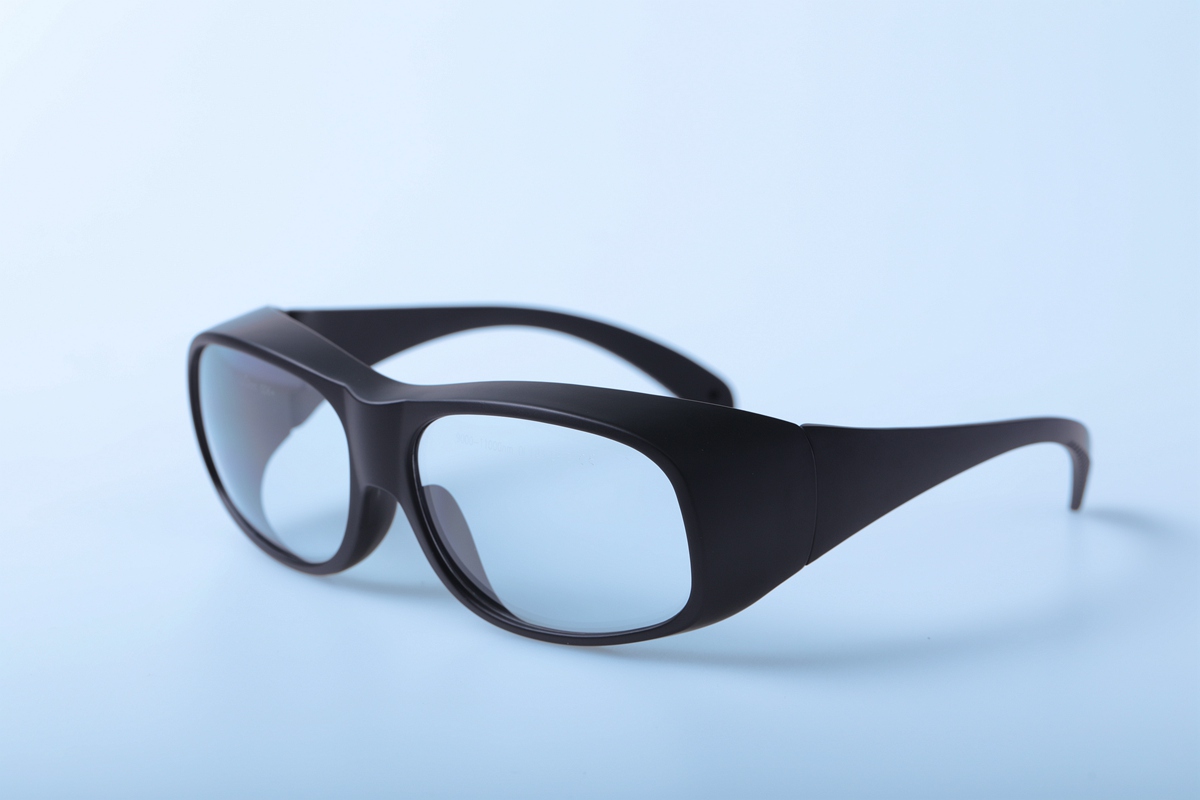The reasons for the price differences in laser protective eyewear
The reasons for the price differences in laser protective eyewear mainly include the following points:
Wavelength Protection Range
Expensive laser protective eyewear: Typically provides a broader and more precise range of wavelength protection. For instance, in scientific research and industrial laser applications, some high-end protective eyewear can guard against multiple different wavelengths of lasers. For example, they can simultaneously protect against two or more specific wavelengths of lasers in the ultraviolet spectrum (such as 193nm excimer lasers) and infrared spectrum (such as 1064nm Nd:YAG lasers). Our laser protective eyewear LP-ADY-2 can protect against ultraviolet lasers, 1064nm infrared lasers, and also 755nm alexandrite lasers.
Cheap laser protective eyewear: May have a narrower range of wavelength protection. For example, some cheaper products may only protect against one or two common wavelengths of lasers, like those primarily designed for 532nm green laser protection, with limited or no protection against other wavelengths. We also have laser protective eyewear like LP-GTY, which protects against both 532nm green lasers and 1064nm fiber lasers, as well as LP-RHP for red laser protection, LP-CHP for CO2 laser protection, and LP-ATD for alexandrite laser protection.
Laser Energy Attenuation
Expensive laser protective eyewear: Can more effectively attenuate high-energy lasers. In high-power laser equipment scenarios, such as laser cutting and laser welding with operating powers reaching kilowatts or even tens of kilowatts, high-quality protective eyewear can reduce high-intensity laser energy to safe levels, ensuring users' eyes are protected. For example, our laser protective eyewear LP-YHP-2 can achieve an OD7+ protection level, reducing laser energy to one ten-millionth of its original level, while LP-ADY-3 offers OD8+ protection, reducing it to one billionth.
Cheap laser protective eyewear: May not provide sufficient attenuation against high-energy lasers. When faced with laser energies exceeding their design protection capabilities, these glasses may offer inadequate protection.

Protection Stability
Expensive laser protective eyewear: Offers better protection stability. This means they can consistently provide protection over long-term use or under varying environmental conditions. Even if the lens surface of the laser protective eyewear is scratched, it does not affect the protection effectiveness.
Cheap laser protective eyewear: Protection performance may decline over time or under different environmental conditions.
Anti-Reflective and Anti-Glare Capabilities
Expensive laser protective eyewear: Often features excellent anti-reflective and anti-glare properties. In complex laser work environments, besides the direct laser light, there may also be reflected light and glare that can harm the eyes.
Cheap laser protective eyewear: Typically has weaker anti-reflective and anti-glare capabilities. This can lead to users being disturbed by reflected laser light and glare during work, affecting visual clarity and increasing the risk of eye injury.
Technology and Research & Development
High-end technology applications: Some expensive laser protective eyewear adopts advanced technologies, such as high-performance laser-absorbing materials, to more effectively attenuate laser energy and provide more precise wavelength protection.
Products with basic technology: Laser protective eyewear with lower technological content may only use basic protective materials and conventional manufacturing processes, resulting in limited protection effectiveness and performance, and thus a lower price.
Material Quality
High-quality materials: Premium laser protective eyewear usually selects high-quality lens materials, such as high-purity polycarbonate or special optical glass, which offer better optical performance, higher impact resistance, and abrasion resistance, ensuring long-lasting and stable protection but also come with higher costs.
Ordinary materials: Lenses made from ordinary materials may perform poorly in terms of optical performance, impact resistance, and abrasion resistance, affecting protection effectiveness and service life, and thus have a lower price.
Certifications and Standards
Stringent certifications: Expensive laser protective eyewear often passes multiple international and domestic authoritative certifications, such as the EU's EN207 standard, the US's ANSI Z-136.1 standard, and China's GB30863 standard. Obtaining these certifications requires significant investment in production and quality control, leading to higher product prices.
No or few certifications: Laser protective eyewear without relevant certifications or with only a few non-authoritative certifications has lower production and quality control requirements, resulting in a lower price. However, the quality and protection effectiveness of such products may not be effectively guaranteed.
Related Products
Submitted successfully
We will contact you as soon as possible




